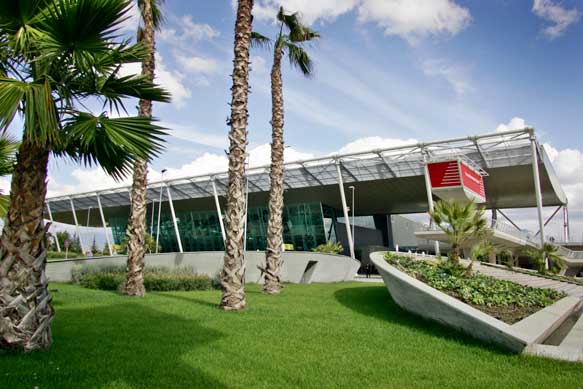Tirana International Airport

Tirana International Airport, also known as Tirana International Airport Nënë Tereza or Rinas International Airport, is the primary international airport serving Albania's capital city, Tirana. Its history can be traced back to the early years of aviation in Albania, and it has since undergone multiple expansions and upgrades.
-
Early history: The airport's origins date back to 1938, when an airfield was constructed near Rinas village, about 15 kilometers (9 miles) northwest of Tirana. The airfield was initially used for military purposes and saw service during World War II. It was occupied by the Italians from 1939 to 1943 and later by the Germans until 1944.
-
Post-WWII period: After the end of World War II, the airfield was used for civilian purposes. The first domestic flights began in 1947, and the first international flights were launched in 1957. The airport was named after Mother Teresa (Nënë Tereza in Albanian), the Albanian-born Roman Catholic nun and missionary who was awarded the Nobel Peace Prize in 1979.
-
Expansion and modernization: Over the years, the airport has undergone several expansions and modernization projects. In 1977, a new passenger terminal was inaugurated, followed by further improvements in the 1990s. In 2005, a 20-year concession agreement was signed between the Albanian government and the consortium Tirana International Airport SHPK. This led to a significant modernization project, including the construction of a new terminal building and the installation of advanced air traffic control systems.
-
Continued growth and development: The airport has experienced steady growth in passenger traffic since the early 2000s. In recent years, several airlines have expanded their routes to and from Tirana, including low-cost carriers. The airport has also become an important hub for cargo traffic in the region. In 2016, Tirana International Airport served over 2 million passengers, and the numbers have continued to grow.
-
Future plans: The Albanian government and the airport's management have announced plans for further expansion and development, including the construction of a new runway, taxiways, and additional facilities. These improvements aim to enhance the airport's capacity and support the increasing demand for air travel in Albania and the wider region.
In summary, Tirana International Airport has come a long way since its inception as a military airfield in the late 1930s. Today, it serves as Albania's primary international gateway, supporting both passenger and cargo traffic. With continued growth and development, the airport is set to play an increasingly vital role in the country's transportation infrastructure and regional connectivity.
 >
>